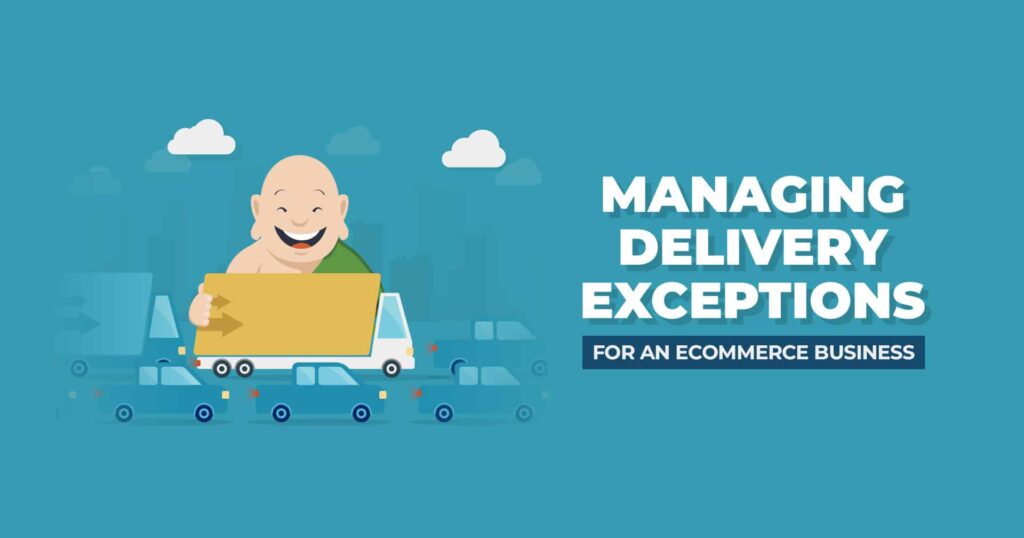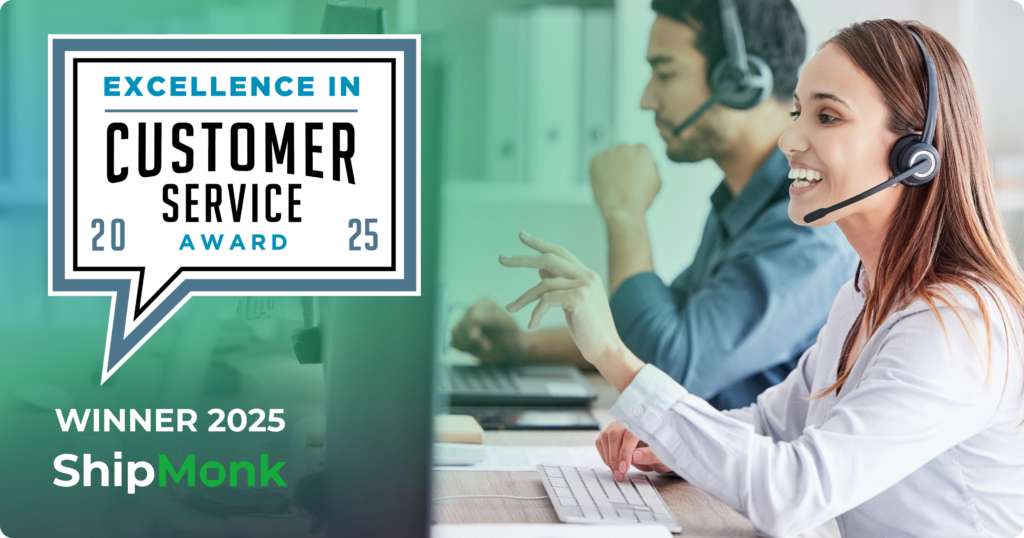If you’ve ever been on the receiving end of a late delivery, you know how frustrating it can be to see that your package is stalled somewhere in Kansas and not know why. In the eCommerce world, customer relationships are everything. You work hard and spend a lot to acquire each customer. The last thing you need is a delivery exception that threatens this tenuous relationship.
So what exactly is a delivery exception? Why do they happen? And what should you do when they occur?
What is a Delivery Exception?
A delivery exception is any type of unforeseen interruption that a shipping carrier experiences while a package is in transit. It may be a temporary holdup such as a snowstorm, or a bigger problem such as a pandemic that shuts down border crossings. The worst part is that it’s not your company’s fault – you did everything right! You made the sale. Your eCommerce fulfillment company picked, packed, and shipped the order on time. Now, suddenly, your customer is unhappy because of something outside of your control.
The good news is not all delivery exceptions cause eCommerce packages to be delivered late. Some delivery exceptions may simply cause a short delay and the package can still be delivered on time. Other delays, like incorrect address, may require a little more work on your end.
Common Reasons for Delivery Exceptions
Weather
It’s no surprise that weather is one of the most frequent reasons for delivery exceptions. Entire regions of the country can be affected by snowstorms, hurricanes, or other atmospheric conditions that bring all traffic to a halt. In these cases, the customer may be well aware of the problem, and understanding. But if the bad weather is occurring closer to the point of origin, they may have no idea why their eCommerce order is delayed.
Holidays
There was a time when people didn’t expect their packages to be delivered on Christmas Day. That time has passed. Nowadays some shipping carriers work through holidays. Still, a national holiday in the country of origin or the destination country can cause shipping delays. Don’t forget, most major carriers shut down for federal holidays.
Customs Delays
Border crossings can be tricky, especially if there are issues with paperwork, labeling, or packaging. Holidays and labor shortages can also cause backups.
Incorrect or Damaged Shipping Labels
If your customer entered the wrong address, or the shipping label is torn or damaged in transit, a package may get stuck in limbo or returned to the sender (the eCommerce company or 3PL). At that point, it falls on you or your fulfillment partner to straighten out the problem and resend the eCommerce order.
Nobody Home to Sign
An insured eCommerce package that requires a signature cannot be delivered if no one is home to sign for it. Usually the shipping carrier will leave a notice and return the next day, or hold the package at the nearest shipping office.
What Happens to the Package?
A delivery exception doesn’t necessarily mean an eCommerce package won’t be delivered on time. If the delivery window has not closed, and the delivery exception is quickly resolved, the package may still be delivered on time. Shipping carriers have deadlines to meet and reputations to uphold. They also have routing software that helps them avoid major storms, traffic delays and border backups.
Most often, packages that incur delivery exceptions are delivered within a day or two of their expected delivery day. A labeling problem or damaged package will likely be returned to the sender, that is, you or your third party logistics (3PL) and fulfillment partner.
Meanwhile your customer is watching that little dot in Kansas on the tracking website and wondering what the holdup is . . .
Tracking Software
All the major shipping carriers including FedEx, UPS, DHL, and USPS provide tracking numbers so customers can watch their packages’ progress in transit if they choose to. Shipping carriers also have processes in place to handle delivery exceptions when they occur. Alerts can be set up to notify the sender (you or your 3PL fulfillment warehouse) whenever a delivery exception occurs. This same tracking software may even tell you the reason for the delay. At the very least it will help you and the shipping carrier locate the package and get things moving again.
What Can You Do to Make Things Right?
Put yourself in your customer’s shoes. Wouldn’t you appreciate a heads up that your package might be delayed but that the eCommerce seller is already aware of the issue and addressing it? The point is, communication is key. Here are steps you can take to shine in that area:
1. Start by managing expectations at the point of purchase. Your website should clearly state expected delivery dates before the order is placed. These estimates should take into account the point of origin, holidays, and expected shipping times. When delivery exceptions do occur, they should not be for a reason you could have notified your customer about in the first place.
2. Avoid problems from the start! 3PL software platforms like the one ShipMonk utilizes, verify addresses and automatically correct them if needed, flagging those that cannot automatically be corrected. Once flagged, they must be manually updated or approved by the sender before we begin fulfilling an eCommerce order.
3. Avoid other delivery exceptions by encouraging customers at checkout to use alternate delivery addresses or shipping methods if a package is valuable, or if they may not be home for delivery.
4. Underpromise and overdeliver, especially for international shipments. When in doubt, give the customer a range of time rather than a specific delivery date.
5. Make order tracking available on your eCommerce website so customers don’t have to dig for information about their order.
6. Utilize a tech-forward 3PL with order fulfillment software that alerts you to any delays in shipping. ShipMonk’s Shipment-At-Risk feature automatically notifies us if the first scan by the shipping carrier doesn’t happen within the expected timeframe, or if there is a delay in the time between scans. If a package is undeliverable or damaged, then the system flags it as such, and it is returned to one of our eleven warehouses for resolution of the problem.
7. When a delivery exception occurs, contact the shipping carrier for available information and notify your customer of the reason for the delay. A tech forward 3PL can automate this process and offer the eCommerce business the option to reship the order immediately, rather than waiting and risking the loss of a customer.
8. Most of the major shipping carriers automatically offer insurance of up to $100 on packages shipped. Sometimes, however, your packages may be shipped using a regional carrier or other less-expensive carrier that does not offer insurance. A 3PL that offers additional optional insurance, such as ShipMonk’s MonkProtect, can protect your valuable shipments no matter the carrier.
9. Make filing claims easy for your customers. While it’s true that a delivery exception is usually not the sender’s fault, your business has the most to lose if a claim is not handled quickly. A 3PL such as ShipMonk offers an online portal for filing claims, and will file and process the claim with the shipping carrier on your customer’s behalf, so you don’t have to. In addition, shipments covered by MonkProtect are automatically credited for shipping costs when a shipping claim is filed (no matter the carrier) without waiting for carrier approval.
Be the Exception
When all the right protections are in place, delivery exceptions become just that: exceptions. If you’re seeing too many of them, perhaps it’s time to look for a fulfillment or logistics company that invests in 3PL order fulfillment software to prevent many of these delivery exceptions from occurring. Softwares that feature automatic address verification, accurate delivery windows, and order editing capabilities can catch plenty of problems before they arise.
While it’s impossible to avoid every delivery exception, particularly the ones caused by Mother Nature, a fulfillment solution that enables quick reshipment of orders, additional insurance, and claims filing and processing can minimize the negative effects for you and your customers. In the matter of delivery exceptions, a high customer satisfaction rating is something you can control, and may be the one thing that sets you apart from your eCommerce competitors.





